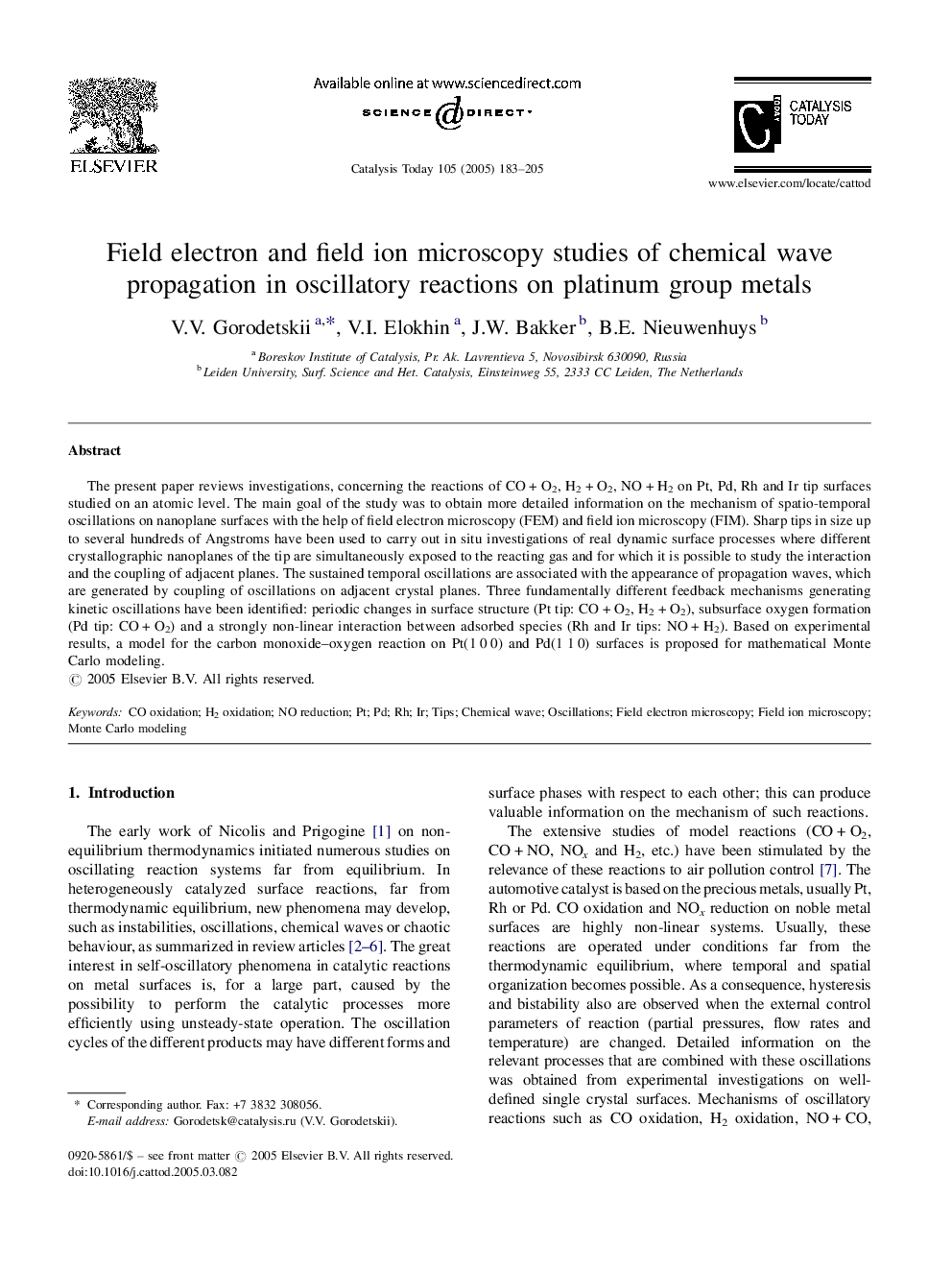| Article ID | Journal | Published Year | Pages | File Type |
|---|---|---|---|---|
| 10243689 | Catalysis Today | 2005 | 23 Pages |
Abstract
The present paper reviews investigations, concerning the reactions of COÂ +Â O2, H2Â +Â O2, NOÂ +Â H2 on Pt, Pd, Rh and Ir tip surfaces studied on an atomic level. The main goal of the study was to obtain more detailed information on the mechanism of spatio-temporal oscillations on nanoplane surfaces with the help of field electron microscopy (FEM) and field ion microscopy (FIM). Sharp tips in size up to several hundreds of Angstroms have been used to carry out in situ investigations of real dynamic surface processes where different crystallographic nanoplanes of the tip are simultaneously exposed to the reacting gas and for which it is possible to study the interaction and the coupling of adjacent planes. The sustained temporal oscillations are associated with the appearance of propagation waves, which are generated by coupling of oscillations on adjacent crystal planes. Three fundamentally different feedback mechanisms generating kinetic oscillations have been identified: periodic changes in surface structure (Pt tip: COÂ +Â O2, H2Â +Â O2), subsurface oxygen formation (Pd tip: COÂ +Â O2) and a strongly non-linear interaction between adsorbed species (Rh and Ir tips: NOÂ +Â H2). Based on experimental results, a model for the carbon monoxide-oxygen reaction on Pt(1Â 0Â 0) and Pd(1Â 1Â 0) surfaces is proposed for mathematical Monte Carlo modeling.
Keywords
Related Topics
Physical Sciences and Engineering
Chemical Engineering
Catalysis
Authors
V.V. Gorodetskii, V.I. Elokhin, J.W. Bakker, B.E. Nieuwenhuys,
